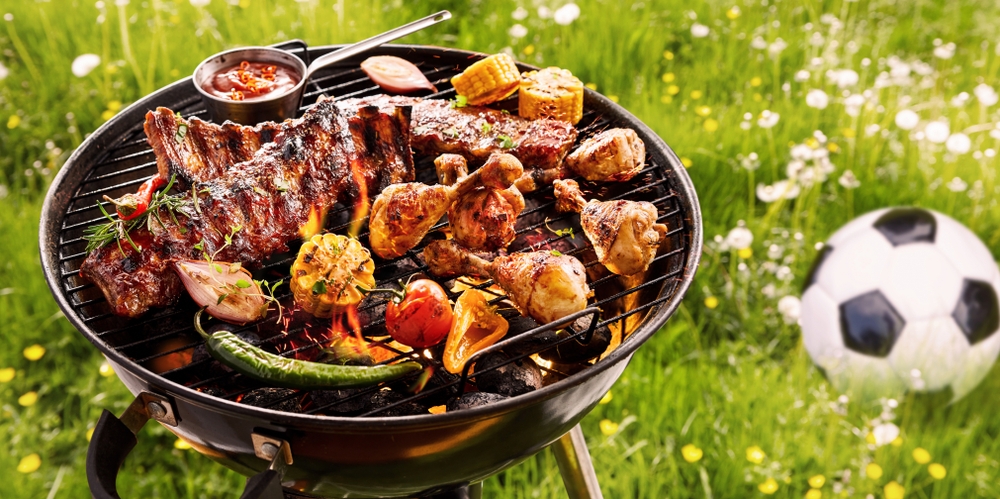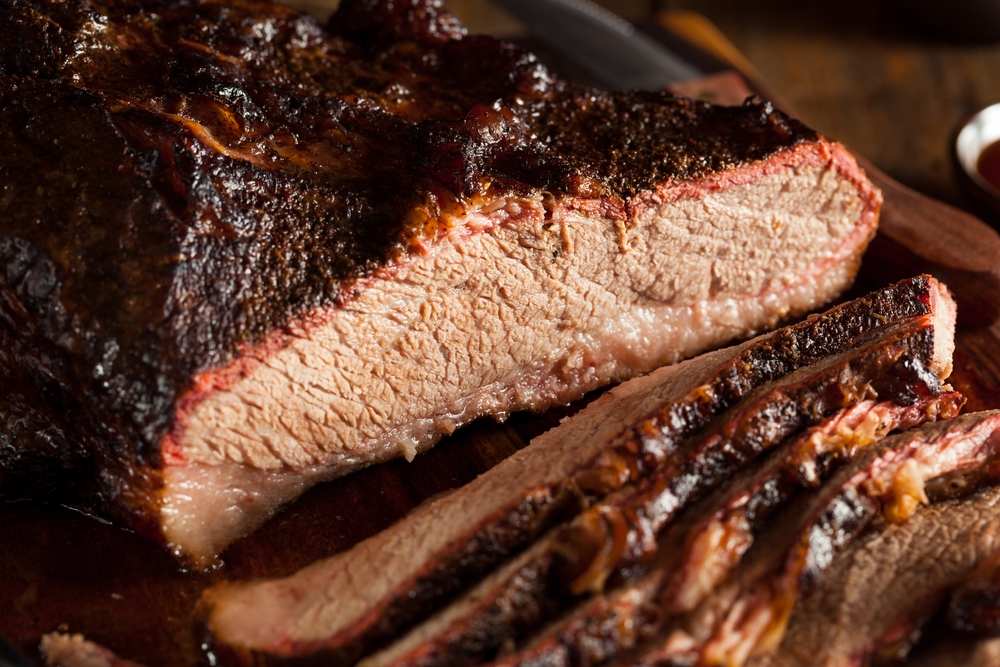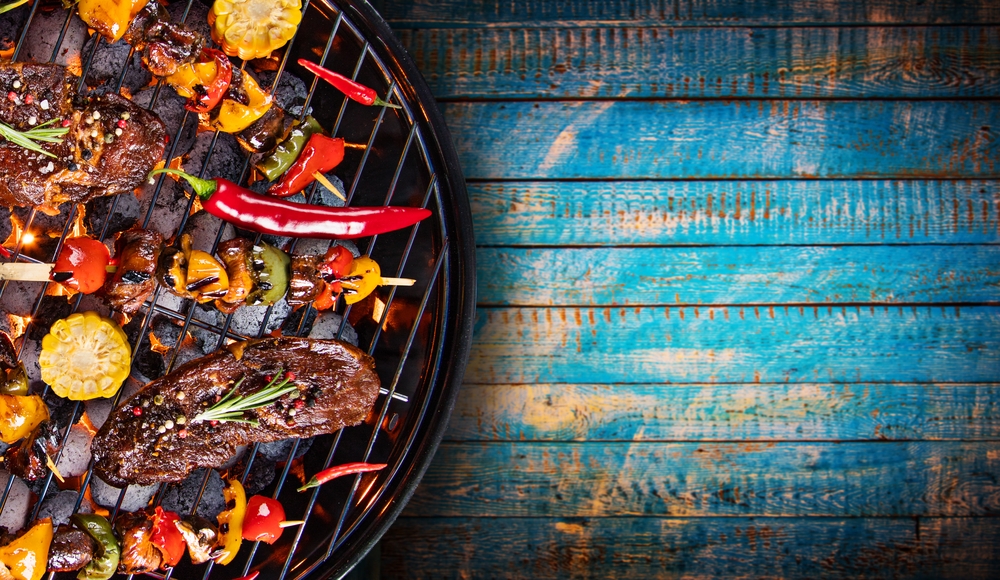The beloved barbecue is an all-time American favorite. Everyone loves to barbecue here in America. Great weather always seems to call for great food and a good time with loved ones. There is no secret that barbecues are one of the most popular and American ways of reuniting with friends and family. Hosting barbecues have been a part of American culture for such a long time that it is hard to think about what we would do without it. They have become a part of our life and what we have grown accustomed to since we were kids to now. We see barbecuing everywhere even if we don’t necessarily partake in it. You will see the parks and beaches littered with people cooking up smoked foods, barbecue restaurants become filled to the brim with people on special holidays, competitions during the summer over barbecues, barbecue products and commercials litter the tv screens and so on. Even if you aren’t a part of the barbecue lifestyle here in America you have definitely seen it everywhere somewhere, somehow. We take our barbecuing very seriously and we have been doing so for generations upon generations. There is no doubt that barbecues are a huge part of the American lifestyle but have you ever wondered where this tradition originated from? How did it all began? Well look no further! This article will go into the specifics of the history of BBQ tradition and how it has evolved over time!
Where it All Began

Robert F. Moss is a barbecue expert and historian! He knows the lowdown on how the whole barbecue tradition unraveled within America. He stated that American barbecue was actually a mixture of several different cultures within the Caribbean. It all began when early European explorers had observed the Taino Indians living in the Caribbean. They noticed that they would cook whole animals over fire and smoke. This was called “barbecue” or “sacred pit.” This practice was coined the term “barbacoa” by the Spanish. As Spanish explorers advanced further towards the North in places such as Virginia, North Carolina, and South Carolina they brought the concept of barbacoa with them. As time moved on the term “barbacoa” eventually changed to become the term it is today; the infamous barbecue. Soon by the 1920s the practice of barbecuing then grew well in the industry of restaurants. Barbecue restaurants soon littered many towns around the US and it is this boom in barbecue restaurants that lead to the evolution to the many barbecue styles that we see today!
The Evolution of Regional Barbecue
Robert Moss states that the concept of barbecue in the US may be similar, but there are differences in the practice that will depend on what region of the US you are in. This tendency to have a difference in barbecue practices based off region is known as regional barbecue styles. This why you notice that the certain foods, sauces, etc. used in California is going to differ from the styles and techniques used in more barbecue-oriented states such as Texas.
The Carolina Region of Barbecue

One of the many regional styles of barbecue that boomed throughout the US during the 1920s included a style of barbecue known as the Carolina-style. It isn’t quite hard to figure out that this style originated from none other than the states of North and South Carolina. Moss states that of all the barbecue styles that exist in the US, the Carolina style of barbecue is probably the closest to the traditional and original barbecue that made its way to the US during the colonial, early 1700s. In this type of barbecue style, pork is infamous for being the main meat to work with. They still take after the Taino Indians from the 1700s, by cooking the whole animal over the fire, in this case a hog. They then use the technique of shredding or pulling the pork meat apart after it has cooked. In this case, the pulled pork meat is very soft that it can be pulled apart straight off the bone with a good amount of ease. In other cases, they may even chop or slice the meat up. Of course, the meat may be the main attraction, but the meat cannot be in the spotlight without a good sauce to go with it! In the Carolinas, a vinegar type sauce is mainly used. South Carolina tends to go for a mustard type sauce that is yellow in mustard and is known as the “Carolina Gold.” The hog is typically rubbed with spices before one begins smoking it and during the smoking practice the hog is then rubbed with more spices and the vinegar or mustard sauce. In Lexington, North Carolina, they also partake in their own style of barbecuing in which they mainly use the shoulder of the pork which is also known as the dark meat. They then follow the meat up with some more vinegar and some tomato. You can picture this type of barbecue as being the beginning tradition of barbecue in America. If you live in the Carolinas or ever take a trip down there then don’t forget to hit up their famous barbecue restaurants so you can have one of the closest tastes to what barbecue originally consisted of back in the 1700s, where it all began. We then turn our attention to the next barbecue tradition to emerge after the Carolinas. It is this barbecue that would take a slightly different turn on the original and historical version of American barbecue. We will now turn our attention all the way to the West to good ole’ Texas.
Texas Styles

From the 1920’s onward we now have shifted our attention away from pork barbecue to a new type of barbecue that would take American barbecue by surprise. Now by this time, beef has been introduced to the game as a possible and new barbecue component. Texas made sure to make beef the new star of the show. They completely ditched the original, colonial pork barbecue and tried out their own infamous smoked brisket. Brisket is a cut of meat that is typically cut from the lower chest of a cow. The cut tends to originate around the chest and shoulder muscle area of the cow. This makes the beef very tough and thick, meaning that the beef typically has to be cooked for very long periods of time at a consistent low temperature. This is the only way to yield the most delicious and juicy results. Texas also decided to be bold and throw away the entire idea of sauces, opting for flavoring their meat through the mixture of herbs and spices that are known as “rub.” The key concept behind not using sauces is so that people don’t focus too much on the sauce and instead focus on the technique of how the meat is cooked. It is intended that people will be able to taste the amount of effort put into the meat by being able to sense the seasonings and wood that have been used to cook the meat (they tend to opt for pecan wood; which is literally everywhere in Texas). With this in mind, you are now seeing how the history of barbecue tradition shifting. We first had whole hog over a fire and sauces as the main tradition from the colonial period all the way up to the 1920’s and now we switch our focus to beef briskets with rub. As we move later on down our timeline, a new barbecue tradition begins to emerge that will once again change the name of American barbecue tradition.
Say Hello to Memphis

We now say hello to the beautiful Memphis, Tennessee and the third region of America responsible for shifting the history and tradition of American barbecue. Here we see Memphis saying “no” to the Texas style of beef brisket and realizing that they want to bring the original barbecue tradition back with none other than the classic pork. Instead this time they decide that the pork shoulder is of no value, rather the pork ribs is where the gold is. They take their inspiration from both the Carolinas and Texas by deciding to serve their meat one of two ways. Either with rub like good ole’ Texas or wet with sauce like the Carolinas. In this sense you see how American barbecue practices are now blending with one another as they are evolving over time, becoming something that is both familiar and new at the same time. This time around Memphis decides to add their own twist by throwing out the idea of vinegar or sour based sauces like mustard. They instead decide to opt for a sauce that is thick and sweet. The Memphis style barbecue focuses on a thick, dark syrup made of raw sugar known as molasses. This was due to the fact that Memphis sits near the Mississippi River and it was very easy for locals of the town to have easy access to molasses from steamboats that carried goods up and down the river on a frequent basis. Then one day a man named Henry Perry came along into the picture. He was a Memphis local who worked as a cook on one of those steamboats and in the early 1900s made the move all the way to Kansas City. He began to share his cooking and barbecuing skills with the locals of his new city and from then on, he became the founder of a new wave of regional barbecue known as the Kansas City style.
Barbecue Tradition & Kansas City
As we reach Kansas City to examine another part of barbecue history act, the fun now really begins. We see how we move from classic pork to beef brisket to pork ribs and now we move onto something else. Kansas City decides that their barbecue is going to be Old meets New. It combines the classic 1700’s style of barbecue known as the Carolinas style, but then takes inspiration from both Texas and Memphis, in order to create a barbecue that is so fresh, modern, and original in concept. Kansas City is best known for its pork ribs but they also make a killer beef brisket like Texas does as well. It decides to mix the concept of North Carolina’s tomato and vinegar sauce idea, but the creates a thick twist that is also sweet, similar to Memphis style barbecue. In this case it uses a sauce that is both spicy and sweet, reminiscent of old barbecue traditions and a sense of respect for the new barbecue traditions that are now emerging in the mid 1900’s of the United States. The tradition of Kansas City barbecue is so popular and serious among many locals that Kansas City is even home to the World Series of barbecues each year. This is known as the American Royal contest. In this regional style of barbecue tradition, we see how the evolution of barbecue tradition grabs a little bit of the old and sprinkles something a little new each time to help form the barbecue traditions that are now the forefront of American barbecue.

Of course, the history of American barbecue can be way more specific than what was stated, but for now here is a little bit of some basic understanding of how our beautiful American barbecue traditions came to be. We can say a big thank you to the Taino Indians in the Caribbean for creating such a concept and another thank you to the European explorers who held onto this concept and brought it to America where it has birthed into something entirely new and familiar at the same time. As you can see, the traditions of how we barbecue change a little bit of each time, signifying how we change as our time progresses onward, but even then, with all these changes we will always keep something the same so that barbecue in the 1700s still feels a little bit like a barbecue in 2018. In this way we still feel as if we are holding onto our tradition. So now that you know about the amazing barbecue traditions that exist around the US, which one is your favorite?
